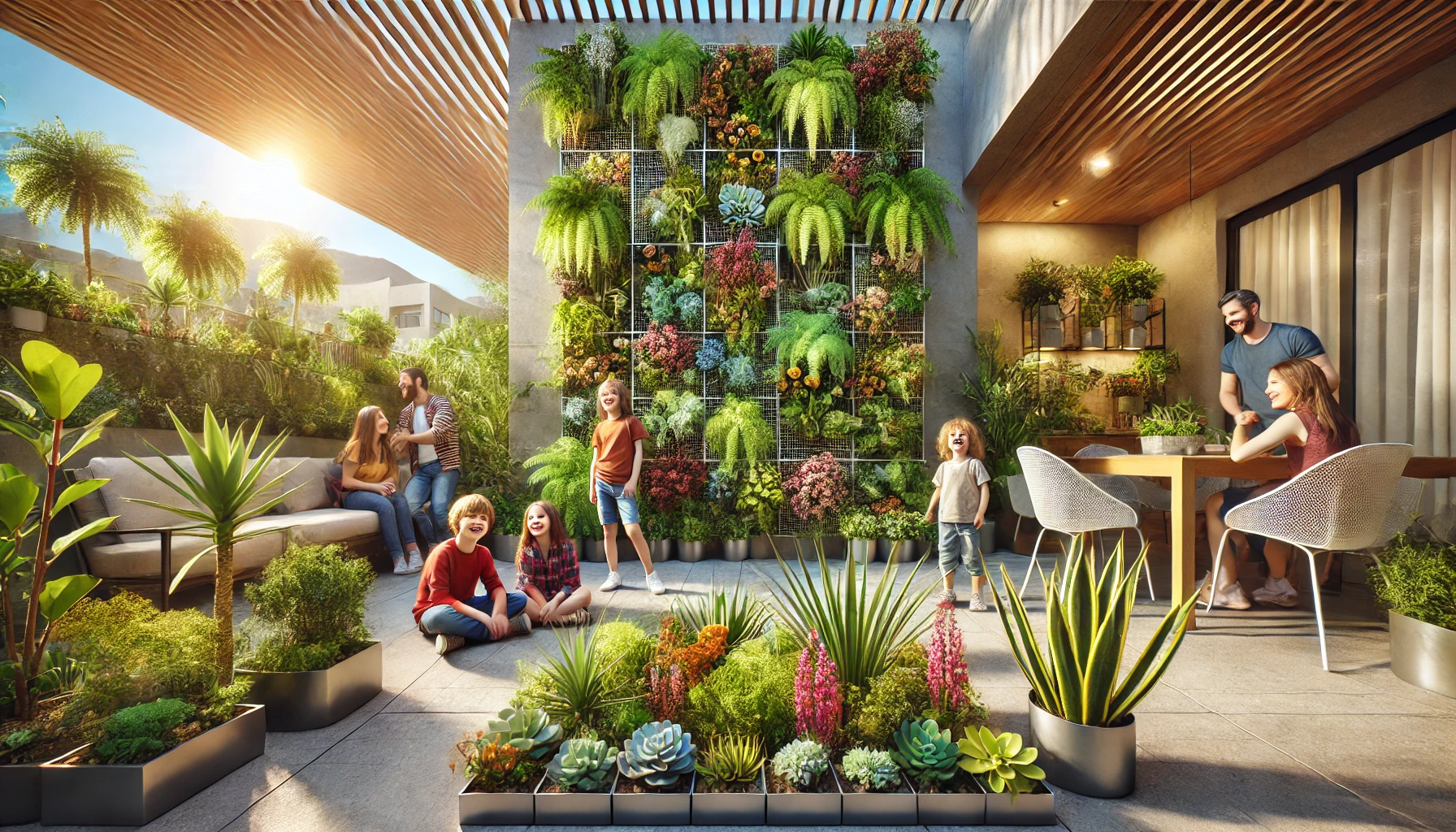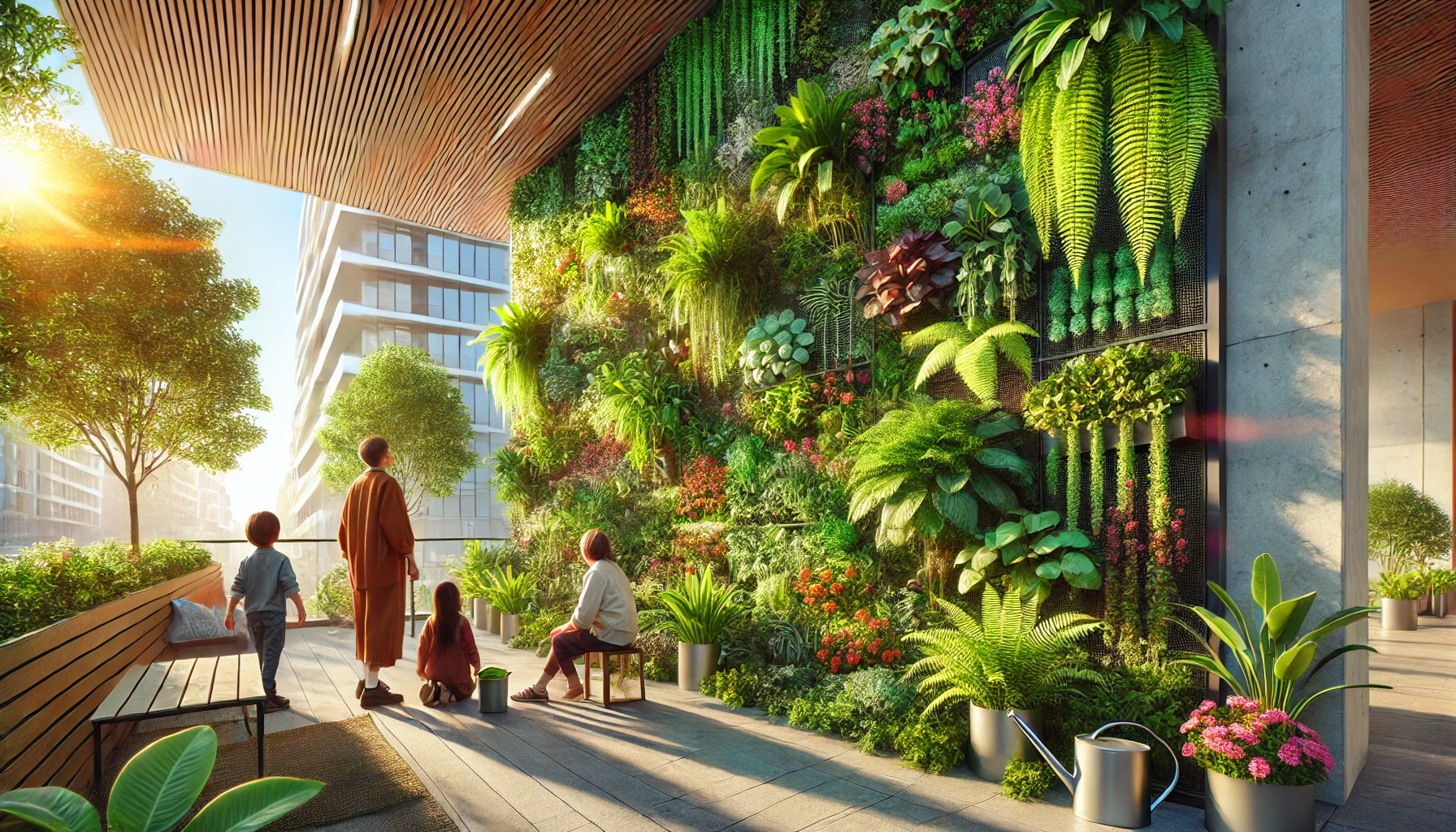Vertical gardens might be just what you’re looking for if you’re trying to spice up your indoor or outdoor space without using too much room. So, let’s get all excited about these Vertical Garden System Plants. Picture this: luscious greenery climbing up your walls, creating a stunning oasis right in your own space. Now, who wouldn’t love that?
Vertical gardening isn’t just about aesthetics, though. It’s also a super practical way to maximize space, especially if you live in an urban area. We’re talking about cleaner air, better insulation, and even some peace of mind with your mini green sanctuaries right at home.
When it comes to setting up your own vertical garden, picking the right plants is key. This step’s gotta be all you, depending on where you’re planning to put your garden, indoors or outdoors, and how much light and weather your plants are gonna deal with.
What Plants Grow Best in Vertical Gardens?
Okay, let’s figure out the top players when it comes to vertical garden plants. First off, you want plants that don’t mind getting cozy with their neighbors. Something with a bit of flexibility goes a long way. Vining plants or those with smaller root systems are usually a safe bet.
Take ferns, for instance. They thrive hanging around in vertical spaces, especially if you have a bit of shade to offer. Then there’s pothos, a total winner if you need something resilient and low-maintenance. These guys don’t mind a little neglect and still make your garden look lush.
You might consider strawberries, too. Not only do they love vertical systems, but you get the added bonus of fresh fruit to munch on! How cool is that? The key is to pick plants that match your specific environment. If it’s a bit shadier, choose plants that love low light. Got lots of sunlight? Opt for sun-worshiping plants instead.
Remember, each plant has its own vibe, so you’ll need to cater to their individual needs, like soil and watering. Getting this right means your vertical garden won’t just survive—it’ll thrive and make everyone else a bit envious too.
Thriving Vegetables for Vertical Gardens
Vegetables can totally rock a vertical garden setup, and they bring more to the table than just their good looks. With a bit of creativity and the right structure, you can grow your own fresh produce, no matter how tight your space is.
Tomatoes are a favorite in the world of vertical gardening. With the help of trellises or cages, they can climb sky-high, giving you juicy rewards for your efforts. Plus, they love soaking up the sun, making them perfect for sunny spots.
Then there are peas, another vertical gardening star. These guys naturally love to climb, so they’re super happy in a vertical garden. And the best part? You can munch on your harvest straight off the vine.
Don’t skip salad greens either. They’re as easy-going as it gets and will keep giving you fresh, crunchy leaves. Growing them vertically also means fewer pests to worry about, which is always a win.
Just remember, veggies will need a little extra support and care. Make sure they’re firmly tied to their supports, getting the right light exposure, and staying hydrated. With some tender loving care, your veggie garden will feel like a mini farmer’s market right at your place.
Unveiling the Challenges of Vertical Gardens
Like all things good and grand, vertical gardens come with their own set of hurdles. Being prepared for these challenges means less frustration and way more enjoyment from your leafy masterpiece.
One of the main obstacles is ensuring stability and support. Plants climbing upward can be heavy, and without proper reinforcements, your garden might end up on the floor. Pro tip: invest in sturdy materials and regularly check on the security of your setup.
Then there’s water management. Vertical gardens can be tricky to water evenly. Gravity plays a part here, causing water to trickle down too quickly and leaving upper plants thirsty while lower ones are swimming. Drip irrigation systems or self-wicking setups can make a big difference.
You might also face issues like plant overcrowding. It’s important to give each plant its personal space to flourish. Crowded conditions can lead to those pesky plant diseases we all dread.
Good airflow is another crucial element. Without it, plants can fall victim to mildew and mold. Make sure you’ve got a plan to circulate air around each plant, whether it’s arranging them strategically or adding a simple fan if you’re indoors.
Tackling these potential pitfalls head-on means more time enjoying your vertical oasis and less time troubleshooting.
Selecting the Perfect Irrigation System
Irrigation can make or break your vertical garden’s success, and picking the right system is crucial to keeping those plants happy. Drip irrigation tends to be a crowd favorite. It’s kind of like having a personal bartender for your plants, giving them just the right amount of water directly at the roots without all the fuss.
These systems are great because they minimize water waste and run-off, meaning you’re conserving resources while ensuring your plants get the hydration they need. If setting up a drip system isn’t your speed, hydroponics might be worth a look, especially if you want to go the soil-less route.
Remember, consistency is key with any setup. Water needs in a vertical garden can vary, especially from top to bottom, so a reliable irrigation system helps maintain that perfect balance. Regular checks are a must too, making sure everything’s working smoothly and adjusting as necessary with the weather changes.
Another tip: consider adding a timer to automate the watering process. It saves time and assures your little green friends are watered uniformly, even when life gets hectic.
Balancing water distribution in a vertical garden sounds complex, but with these systems in place, you’re setting your plants up for a long, lush life.

Innovative Design Ideas for Vertical Gardens
Thinking outside the planter box can make your vertical garden a showstopper. Getting creative with your structure means you can tailor it to fit both your space and your style.
Old ladders make for fantastic plant stands—they’re easy to find and add a rustic touch. Secure some pots or add shelves, and you’ve got a unique green wall. Pallets can also be transformed into quirky planters. Just spruce them up a bit, stick them to your wall, and you’re good to grow.
Consider mixing up textures and colors to add some flair. Combining plants with different leaf shapes or hues can create a dynamic and eye-catching display.
If you’re a DIY enthusiast, try building your own living wall with a frame and some planting pockets. You’ll have the freedom to choose exactly how big or small you want it to be, and can change it up as your plants evolve.
Don’t forget about sustainability. Reusing materials or opting for eco-friendly options can make your garden not just cool, but kind to the planet too. From upcycled containers to rainwater collection for watering, your garden can be as green in practice as it is in appearance.
Mix function and flair by integrating functional elements like lighting or seating. This can transform a typical garden into a full-blown oasis where you can kick back and enjoy the fruits (or veggies!) of your labor.
With a bit of imagination, your vertical garden can be a true reflection of your individuality and your eco-consciousness.
Conclusion: Harnessing the Power of Vertical Gardens
Vertical gardens are the perfect blend of creativity and practicality, filling our spaces with greenery where you least expect it. These gardens offer more than just a pretty face—they provide fresh produce, improve air quality, and make efficient use of small spaces.
Bringing a vertical garden to life involves choosing the right plants, understanding their unique requirements, and overcoming the challenges that come with getting them off the ground, literally. From selecting an ideal irrigation system to creatively designing your setup, every step is an opportunity to put your personal stamp on the project.
Incorporating these gardens into your lifestyle can seem daunting at first, but the rewards far outshine the initial effort. Embrace this chance to experiment, express your inner gardener, and enhance your living area. Whether you’re a seasoned pro or planting your first seed, vertical gardens offer something for everyone.
So, here’s the call to action: start planning your vertical masterpiece today, and discover just how transformative a wall of green can be. Enjoy the journey, nurture your space, and watch as your plants—and your satisfaction—grow.


I really enjoyed this article—it’s so inspiring and full of great ideas! I love how you laid out the best plants for vertical garden systems and explained why each one works so well. The suggestions for herbs, like basil and thyme, really caught my eye since they’re both practical and beautiful for a green space. I also appreciate how you included flowering plants to add a pop of color—such a nice touch! Do you have a personal favorite among these plants that you think works especially well in most vertical gardens? This is such a motivating read for anyone wanting to transform their space with greenery!
Thank you so much for your thoughtful comment! I’m thrilled to hear you enjoyed the article and found it inspiring. Herbs like basil and thyme are indeed fantastic choices—they’re not only useful in the kitchen but also thrive beautifully in vertical gardens. Adding flowering plants for a splash of color is one of my favorite ways to make a green space even more vibrant and welcoming.
As for my personal favorite, I’d have to say strawberries are at the top of my list! They’re versatile, easy to grow in vertical setups, and nothing beats the reward of fresh, homegrown fruit. Plus, they look adorable as they cascade down the garden. Have you tried growing any vertical plants yet, or are you planning your first project? I’d love to hear more about your green space journey!